13 years after landing on the surface of Mars, NASA's Opportunity rover continues to survive the harsh conditions of the Red Planet. The ravages of time showed their signs on its instruments, global sandstorms blocked the sunlight without which it cannot function and in the harsh Martian winters it had to find shelter, but the little rover Opportunity continues to travel through valleys and hills across the planet, in the longest mission on Mars and one of the most successful most of NASA.
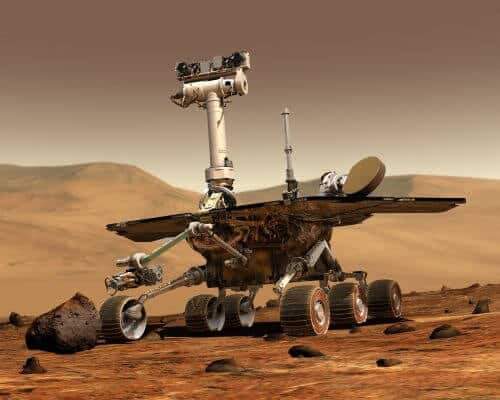
For the past two years, NASA's Opportunity rover has been exploring the rocks and hills in "Marathon Valley", a small valley on the edge of the Endeavor crater that the rover has been exploring since 2011. The valley was named because it is where the rover completed a marathon run (42 km) since its landing. on the surface of mars.
Opportunity tried to reach In Marathon Valley to the top of a hill where there is a group of rocks sticking out of the ground, which the mission operators wanted to explore. But the rather steep slope brought the vehicle to a dangerous angle of 32 degrees, the highest angle the rover has reached since the beginning of its mission, and in the end it was decided to pull back.
Now that it has finished exploring Marathon Valley, Opportunity is making its way out of the valley and back to the smoother meridian plane that surrounds Endeavor Crater, from where it will move south toward a gorge that crosses the crater rim. The researchers estimate that the channel was formed by flowing water in an ancient period of Mars, known as the right time (from about 4.1 to 3.7 billion years ago), in which there was liquid water on the surface of Mars.
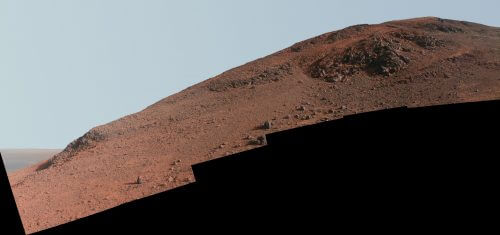
The gorge is only 500 meters away from where the rover is now, but the hills and steep slopes will surely make the way harder and longer for him. In addition to this, this year the rover will enter its eighth winter since its arrival on the planet, and the less amount of sunlight will make it difficult for it to operate.
The above description may not be particularly sensational, as Opportunity is neither the first nor the last rover to travel across the Red Planet. Before it, the tiny Sojourner rover operated for about three months in 1997, which was the first rover to successfully land and operate on Mars. Opportunity and its twin brother Spirit, which both landed in 2004, were a new and larger generation of rovers, weighing 185 kg each. Since then, NASA has launched a more advanced rover weighing 900 kg, Curiosity, which landed in 2012 and continues to operate to this day as well.
But the fact that Operatiniti is doing all this 13 years after landing on Mars, and continues to explore the red planet despite the difficult conditions that prevail on it, is still surprising.
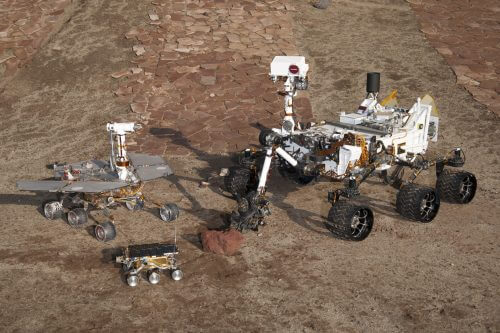
The rover Opportunity landed on Mars on January 25, 2004, across a meridian plane located in the equatorial region of Mars (in the same region crashed Last year the European Space Agency's Schiaparelli lander). The rover landed shortly after its twin, the Spirit rover.
The two small rovers were launched on a mission originally planned to last only 90 Martian days (about 93 Earth days), but they survived well beyond that. Despite the fear that the solar panels of the rovers would over time be covered with dust that would prevent them from operating, Mars "intervened" and helped save the rovers - his winds blew the dust away, and sometimes they were even Sand elves who cleaned the solar panels of the rovers and allowed them to survive.
The Spirit rover survived until 2009, when it got stuck in the sand, and contact was finally lost in 2010. Opportunity was luckier than him, and continues to this day to travel and function well, despite the ravages of time that have shown their signs on it. Among other things, the rover's flash memory stopped working, so it can no longer save information long-term, and must transmit the data and photographs it made and collected at the end of each day, otherwise they will be lost.
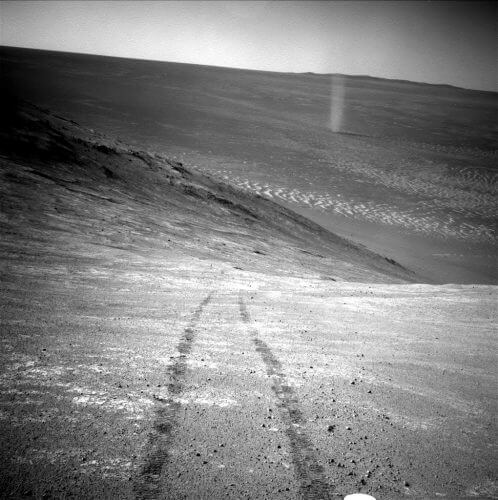
During his long stay on Mars, Opportunity also had to survive the planet's harsh winters, which are twice as long on Mars as on Earth. In recent winter seasons the rover had to compensate for the lack of the weakening sunlight by using Finding shelter in sloping areas, where its solar panels are at a more efficient angle for generating electricity.
The rover also had to survive sandstorms, the main danger they pose to the rover's survival is blocking the sunlight needed to generate electricity. In 2007 A particularly severe sandstorm resulted in 99% of sunlight being blocked by the heavy dust, and the fear for the rover's survival was very real.
Nevertheless, the rover has survived since then and continues to operate quite impressively, on the longest mission that has operated or is operating on the surface of Mars, and the rover has covered more distance than any other rovers launched to Mars or the Moon.
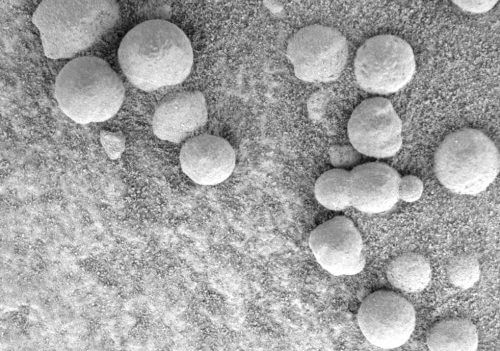
Opportunity, along with its twin brother Spirit, were able to prove that in the early days of Mars there was liquid water on its surface, an important step in the search for an answer to the question of whether Mars was (or still is) suitable for sustaining life.
One of the interesting pieces of evidence for the presence of liquid water in the ancient past of Mars, the rover Opportunity Find already at its original landing site. The rover accidentally landed in a small crater that was nicknamed "Eagle Crater". One of the evidences that the ground at the landing site was previously soaked in water were small spheres that were embedded in the rocks at the landing site as well as freely scattered on the ground. The data sent by the rover showed that those tiny spheres, which were nicknamed "blueberries", contain hematite, an iron mineral that can form in the presence of water, and the assumption of the researchers is that the globules were formed by the gradual accumulation of the mineral in water-soaked soil.
So what is expected of the mission in the future? Last year, the mission was extended by an additional two years for a mission in which, as mentioned, you will explore a channel in the edge of the Endeavor Crater that the researchers estimate was formed by a liquid, most likely water, in the early period of Mars.
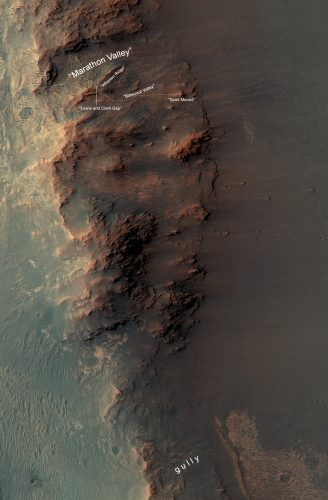
This will be the first time ever that such a route on Mars has been closely explored by any research vehicle. "We are sure that this is a channel carved by a liquid, and heaven was involved in this," said Opportunity Mission Principal Investigator Steve Squires of Cornell University in Ithaca, New York. "Channels carved by liquid on Mars have been seen from space since the 70s, but have never been studied closely. One of the three main objectives of the extended mission is to explore this channel. We hope to learn whether the liquid was a spilled stream [of rock and soil], with many particles soaked in water, or a stream that contained mostly water and less [rocky] material."
Mission operators plan to drive the rover along the channel, which crosses the western rim of Endeavor Crater. After it finishes exploring the channel, the rover will enter the crater for the first time, which it reached in 2011. Among other things, the rover will compare the rocks inside the crater and those it explored outside.
"We may find that the sulfate-rich rocks we saw outside the crater are not the same inside," Scaviers said. "We believe that these sulfate-rich stones were formed by processes related to water, and water flows down the slope. It is possible that the watery environment deep inside the crater was different from the one outside on the plain - it is possible that it was different in terms of time period or chemically."
See more on the subject on the science website:
- A decade since the landing of Spirit and Opportunity - the Mars vehicles that changed the face of research, January 7, 2014
- Opportunity arrived at Endeavor Crater on Mars where he travels for 3 years, August 13, 2011
- A dust elf from Adimai entered Opportunity's field of vision, August 6, 2010
- Opportunity Reveals Ancient Water and Spirits in Victoria Crater on Mars, June 7, 2009
- The expected long journey to Opportunity, October 11, 2008
